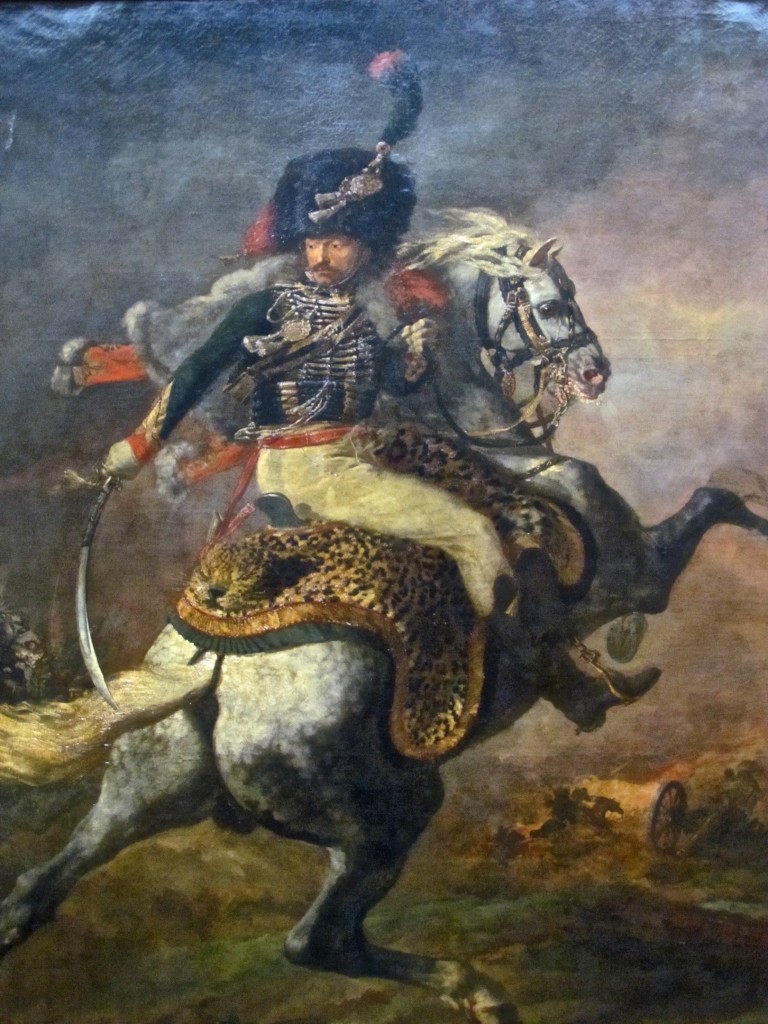 One of my blog readers commented on the Not Finding Much Napoleon at the Louvre post that “sadly, [I] missed the excellent romantic painting of a Napoleonic-era cavalry officer by Géricault.” His comment sent me scrambling for the DVD where I store my Louvre photos, certain I remembered the piece he had in mind. Sure enough, here’s my photo of An Officer of the Imperial Horse Guards Charging.
One of my blog readers commented on the Not Finding Much Napoleon at the Louvre post that “sadly, [I] missed the excellent romantic painting of a Napoleonic-era cavalry officer by Géricault.” His comment sent me scrambling for the DVD where I store my Louvre photos, certain I remembered the piece he had in mind. Sure enough, here’s my photo of An Officer of the Imperial Horse Guards Charging.
Among the great painters of the period, Théodore Géricault (born 1791 – died 1824) was part of a movement that romanticized heroism, agony, and savagery. His paintings were meant to instill the desire to experience grand emotions. Contrast this heroic figure set against a burning battle scene with today’s prevalent photos of our wounded heroes. Perhaps, we’re learning to consider consequences before glory.
Géricault painted this 12’ by 9’ canvas of a soldier controlling his magnificent wild-eyed horse in 1814. Ten years later, he himself “experienced” a fatal fall off a horse.

Another great post, Margaret! Look forward to seeing you in Baltimore! We’ll be arriving on Saturday morning, as we have “Tosca” at the Kennedy Center on Friday – one of my favorite operas and with a “Napoleonic” subtext as well.
Thanks, Alix. I’m looking forward to seeing you also at the Napoleonic Historical Society’s conference. Enjoy Tosca!
I have what looks like the painting of Napolian, “Man on a Horse” by T Ford. It doesn’t look like a copy. Could it be the original?
Gosh, I really don’t know. I’m not familiar with that artist. If you think it’s valuable, I suggest you take it to an appraiser. Maybe you have a treasure!
I have seen a larger oil painting of the Napoleonic Officer. It was painted by another artist. Did other well known artists make larger versions of that painting.
This painting in the Louvre is quite large: twelve feet high and nine feet wide. I don’t know of any larger painting that you might be referring to. There is a much small one in the National Gallery of Art in Washington, DC that is of Trumpeters of Napoleon’s Imperial Guard, also by Théodore Géricault. It’s about 2 feet high by 1 ½ feet wide.